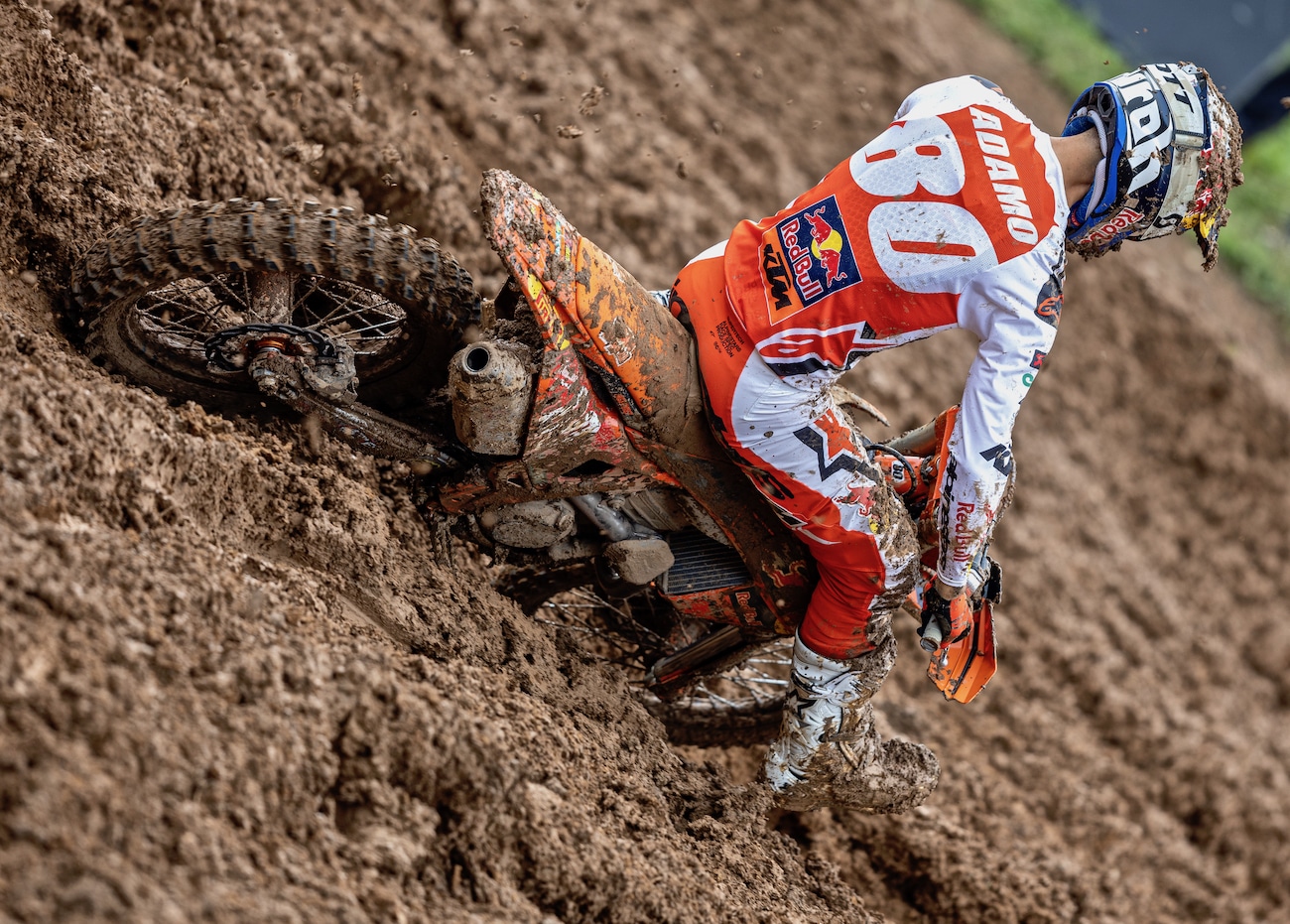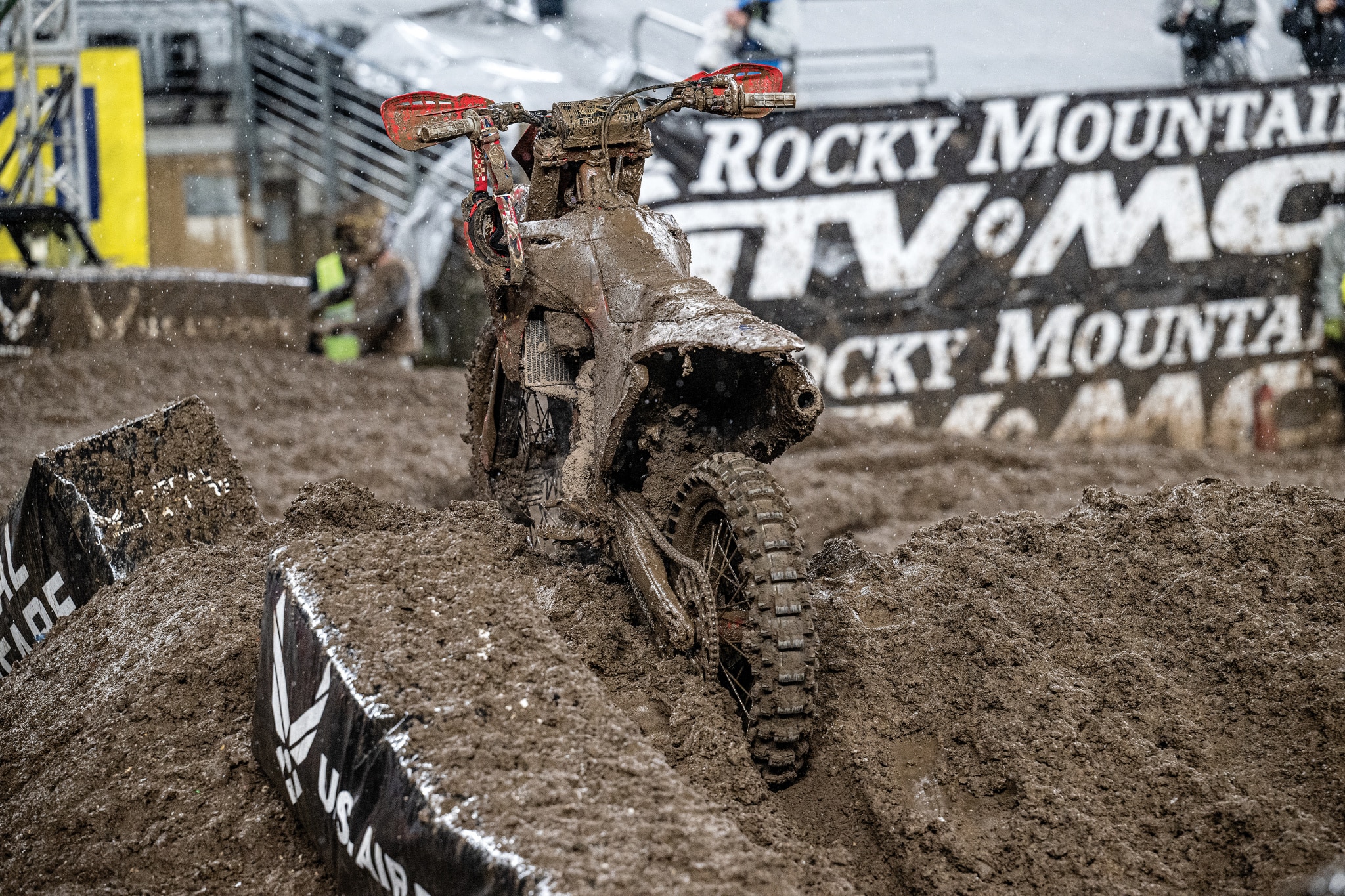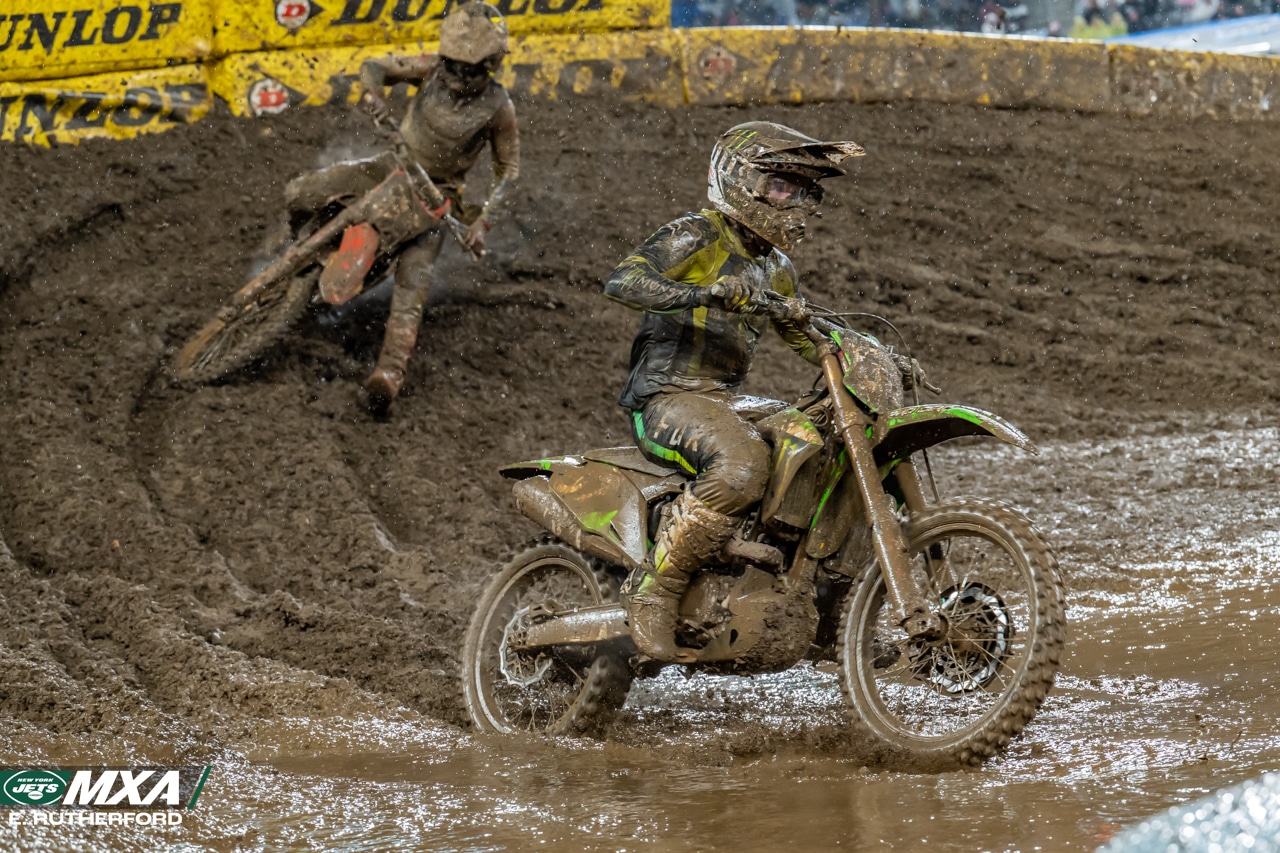TEN THINGS ABOUT RACING MOTOCROSS IN THE MUD
(1) The great equalizer. Known for leveling the playing field, mud races are the underdog’s big opportunity. They favor riders who are committed and willing to ride on the edge, knowing that it could bite them at any time. The list of potential winners grows significantly, while the big-money contenders play it safe in these conditions, knowing the risk-versus-reward quotient is high.
(2) Daytona 1987. Northern California’s Rick Ryan became the first privateer to win a Supercross in the Premier class at Daytona in 1987. The rains came on Friday night and created a sloppy but raceable track that led to Rick’s first and only AMA Supercross win.
(3) East Rutherford 2023. Max Anstie added his name to the privateer winners list when he won the 250SX East/West Shootout Main Event in East Rutherford—a mudder in which the Englishman bested both of the Lawrence brothers. From the outside looking in, Max has a semi-truck and big support from the Firepower Honda team. However, it’s not a factory team. It’s privately funded, and his bike doesn’t share any of the factory HRC parts that Jett and Hunter have. Thus, it’s still a privateer effort, even though it’s far more high tech than most van-traveling privateers.
(4) Training. If you’re a serious racer, it’s a good idea to ride in the mud. It helps you become a better rider, not only in wet conditions but on dry tracks, too. Because you’re constantly off balance and your wheels are searching for traction, riding in the mud forces you to have exceptional bike skills, or else you’ll find yourself on the ground.
 Newly crowned 2023 250 World Champion Andrea Adamo tries to preserve the clutch, because if it goes, so will forward momentum. Photo: Ray Archer
Newly crowned 2023 250 World Champion Andrea Adamo tries to preserve the clutch, because if it goes, so will forward momentum. Photo: Ray Archer
(5) Preservation. One important tactic for mud riding is clutch preservation. By maintaining momentum, you can slip the clutch less, which will protect your engine. Riders use the clutch much more than usual in the mud, which creates more heat and wears out the plates faster—both of which rob power.
(6) Smoke. For years now, TV announcers would point at the steam coming off a rider’s bike in a mud race as being a problem. Finally, someone educated the announcers about the difference between radiator coolant versus engine oil and smoke versus steam. Coolant spews out of the radiator’s overflow hose when the bike is too hot. It’s an indicator the bike is starting to overheat, but it also means your bike still has fluid in the radiators. Once it stops steaming, then you should be worried. It’s rare to see actual smoke come off of a bike.
(7) Bike prep. Twin Air has mesh radiator screens that help deflect mud, allowing the radiators to breathe properly. Factory mechanics use heavy-duty, highly perforated foam and pack it in between the frame and engine in open spaces where mud usually packs, just to keep it from sticking. Acerbis makes rubber footpeg covers to ensure your pegs don’t get packed with mud, Maxima’s SC1 spray works well under the fenders to help prevent mud from sticking and scoop tires are designed just for muddy and sandy condition..
(8) Gear. Scott and EKS Brand goggles are two companies that make perimeter-sealing, laminated tear-offs that stick to your lenses, keeping water and dirt from going behind your tear-offs. They are a big deal, especially because water can splash behind your tear-offs and ruin your vision on lap one. Also, Twin Air makes a mud deflector for your helmet, which is a thin piece of foam that sticks to your helmet visor and keeps mud from sticking. You won’t know how important this is until you have an extra 5 pounds of mud stuck to your helmet, weighing heavily on your neck as you ride.
(9) Technique. Soft mud will drag your front end down into the dirt, slowing momentum and throwing your body forward. A basic rule when riding in soft conditions is to keep your front wheel light. By leaning back, you’ll put more weight on the rear to gain traction and stability in the sloppy stuff.
(10) Maintenance. The sooner you can wash your bike after riding in the mud, the better. In race-day situations, washing the bike in between motos allows it to properly cool off. Mud left packed around the engine cases retains heat, and once you go to ride again, that excess heat will rob power and cause your bike to overheat. When you’re done racing for the day, washing your bike as quickly as possible also helps prevent rust and corrosion. Mud left on the bike will stain and slowly eat away at the integrity of the metal it’s in contact with. After washing, use healthy amounts of Maxima MPPL (multi-purpose penetration lube) or WD40 to prevent rust.







Comments are closed.